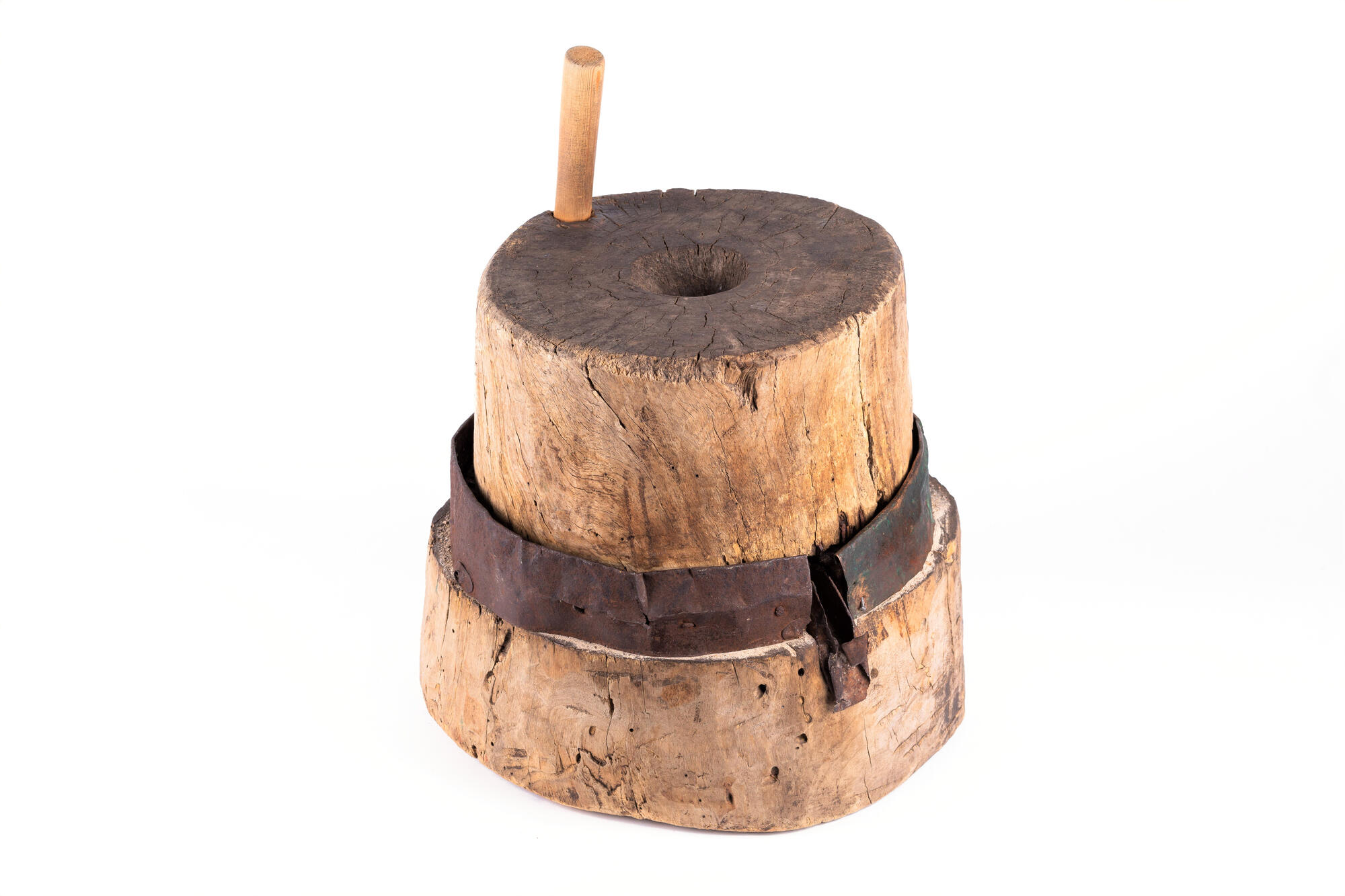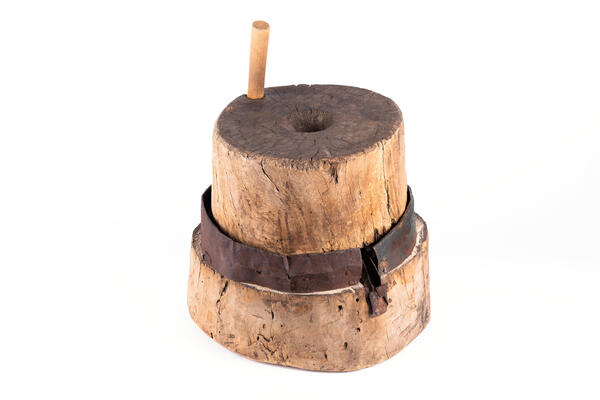A handmill is a mechanical device to help grind plant products or minerals. It consists of two rounded, rotating blocks — millstones. To make millstones, both wood and stone could be used (the museum’s exposition showcases wooden millstones). The very name comes from the Old Slavonic word “zhrnve”, which can be translated into modern Russian as “heavy”: the millstones really did often weigh a substantial amount.
Millstones have been used by mankind since ancient times: scientists believe that people began to use this device even back in the Stone Age (from 10–3 millennium B.C.). Most often, millstones were used for grinding wheat and other grains into flour, as well as for grinding other edible plant and animal products. They also served to grind various minerals, which were either used as food for humans and animals or as components to produce medicines, components for various kinds of building materials, and paints.
The millstones on display at the museum have an upper rotating block with a hole that goes through it in the form of a funnel — the grain was poured into it. The upper millstone, which is also the edgestone, is mobile, and that is the one that does the actual grinding. Conversely, the lower millstone is mounted and stays stationary. The upper part of this lower millstone is lined with a strip of tin. In addition, these millstones have a special hole for crushed grain – a tin chute. The upper millstone was freely rotated by using a handle: the mechanism was set in motion with one hand, and grain was poured in with the other. A container for the so-called “chopped grain” — the primary product following grinding — was put under the chute. Subsequently, the chopped grain was also passed through a sieve.
To make the millstones used to grind cereals and grains, forms from deciduous wood were usually used — the absence of any resin guaranteed that the surface would be smooth. The height of each millstone was about 25 cm, and the diameter was at least 25 cm. The surfaces of the millstones that came into contact with each other had a jagged surface. Any pieces of cast iron or steel could be the jags; those were driven into the wooden base called a churban.
Millstones have been used by mankind since ancient times: scientists believe that people began to use this device even back in the Stone Age (from 10–3 millennium B.C.). Most often, millstones were used for grinding wheat and other grains into flour, as well as for grinding other edible plant and animal products. They also served to grind various minerals, which were either used as food for humans and animals or as components to produce medicines, components for various kinds of building materials, and paints.
The millstones on display at the museum have an upper rotating block with a hole that goes through it in the form of a funnel — the grain was poured into it. The upper millstone, which is also the edgestone, is mobile, and that is the one that does the actual grinding. Conversely, the lower millstone is mounted and stays stationary. The upper part of this lower millstone is lined with a strip of tin. In addition, these millstones have a special hole for crushed grain – a tin chute. The upper millstone was freely rotated by using a handle: the mechanism was set in motion with one hand, and grain was poured in with the other. A container for the so-called “chopped grain” — the primary product following grinding — was put under the chute. Subsequently, the chopped grain was also passed through a sieve.
To make the millstones used to grind cereals and grains, forms from deciduous wood were usually used — the absence of any resin guaranteed that the surface would be smooth. The height of each millstone was about 25 cm, and the diameter was at least 25 cm. The surfaces of the millstones that came into contact with each other had a jagged surface. Any pieces of cast iron or steel could be the jags; those were driven into the wooden base called a churban.



